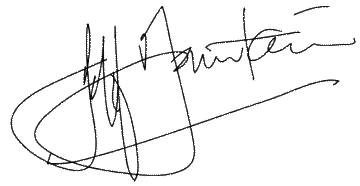One of the biggest surprise discoveries so far on this year’s Heritage trip-and there have been several-was that of the vital and diverse Francke Foundations in the Eastern German city of Halle.
I had taught about Halle for decades-as a centre of Pietism that had breathed new life into the Lutheran movement after the religious wars following the Reformation and Counter-Reformation. Pietism was a second phase of the Reformation, applying Biblical truth to personal lifestyle and spirituality.
The movement started around 1670 in Frankfurt with Philip Jakob Spener, a Lutheran pastor who introduced Anabaptist concepts of body life, lay leadership and personal application of Sunday’s sermon into the (by-then) institutionalised Lutheran Church. Spener developed ‘little churches within the church’ (ecclesiolae in ecclesia), something like Alpha groups or home groups today within the larger congregation.
This was highly unorthodox. Only those with official theological education were licensed to expound scripture in those days. Very quickly this movement was branded with all sorts of unflattering names, including ‘Priests of Baal’.
Spener’s son-in-law, August Hermann Francke, took over the mantle of this movement around the end of the 17th century, developing a most impressive centre of diverse ministries in Halle, not far from Leipzig and Wittenberg. These ministries were far from being simply super-spiritual, as the term ‘Pietism’ is often understood today. Rather, Pietism stood for holistic social engagement, motivated by deep personal devotion and faith in God.
Changed Heart
Francke believed that a changed world began with a changed heart. Education based on a biblical worldview and personal relationship with the Creator was at the heart of these institutions which Francke began to develop with a long-term strategy of social transformation.
A professor of oriental languages and a Lutheran pastor, Francke also had an obvious gift for fund-raising. In 1700, he completed construction of an impressive five-storey orphanage, one of numerous large buildings in an educational complex including a poor school, a school for wealthy people’s children, a printing-house, a library, bookstores, Germany’s first children’s hospital, a pharmacy, a brewery, a bakery, a mill making paper from rags, gardens and plantations… and more!
The Francke Institutions were in part supported by the success of a medicinal cure-all called essentia dulcis (sweet essence) marketed in both Europe and North America. Halle had a global reputation and became the centre of a global communication network reaching to Russia, England and North America.
It was from Halle that the first Protestant missionary enterprise began. In 1705, two students set out for India with the support of the Danish court, which had (and still has) strong Pietist sympathies. Ziegenbalg and Plutschau worked among the Tamil and Telugu of southern India, translating the Scriptures into their languages.
(I recently learnt that YWAMer Philip Powell, from India now working out of England, comes from a line of believers starting with a convert of Ziegenbalg!)
Ziegenbalg also influenced another young man, Ludwig von Zinzendorf, who enrolled to study in Halle as a 10 year-old in 1710. There he had met the missionary visiting from India, an encounter that would help inspire the remarkable Moravian missionary movement started in 1732.
Most of this I had often taught, including the fact that John Wesley had also been greatly impressed by his visit to Halle in 1738 en route to Herrnhut some 250 kms to the east.
So what was the big surprise in store as we drove our van into the Halle city centre this week? Simply this: to discover that these institutions had survived the decades of fascist and communist governments, and had been restored both as buildings and learning centres, close to their original condition! And that today some 4000 people studied, worked and lived on the original site spread over 16 hectares in the middle of this bustling city!
I had no idea anything would be there to see from this movement. I had hoped for some kind of monument to show my fellow-travellers on which to ‘hang’ the story of Pietism. But this I had not expected!
Curiosities
We found ourselves standing outside the original orphanage building, restored in her former glory, with a Bible verse freshly painted high above the entrance: ‘Die auf den Herrn harren, kriegen neue Kraft, dass sie auffahren mit Flügeln wie Adler.’ (He who waits upon the Lord will renew his strength and rise up with wings as the eagle. Is. 40:31)
As we walked around the grounds, we passed the original bakery, the book-bindery and the largest half-timbered house in Europe, 110 metres long built in 1710. The grounds were far too big for us to explore in the time we had. Neither could we peruse the oldest preserved public museum in Germany, based on Francke’s collection of curiosities from around the world. Strains of classical music drifted out from one of the several music schools now housed in the complex. We could only read about the oldest preserved secular library in Germany behind walls we walked along, housing 35,000 volumes dating from the 16th century; …and about the several schools-nursery, primary, Montessorri, grammar and vocational-housed on the complex.
The inscription on a statue of Francke with two young children summed it all up: Er Vertrauete Gott – He trusted God.
Till next week,

